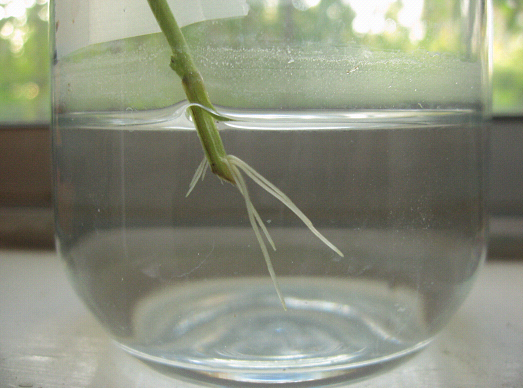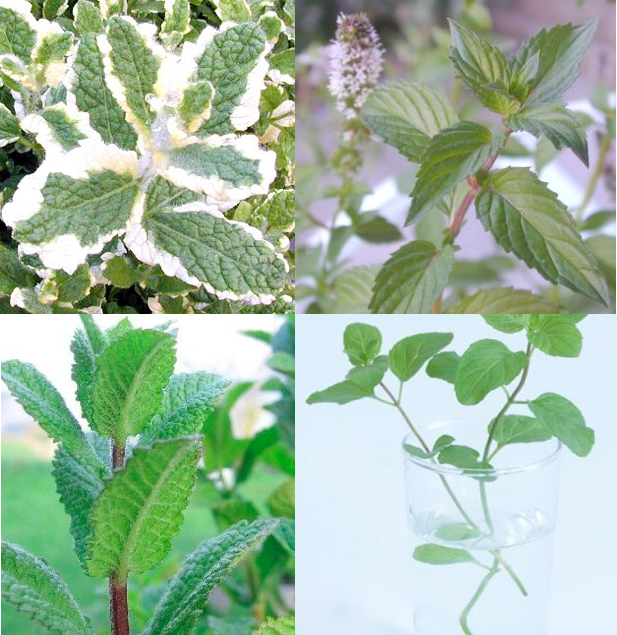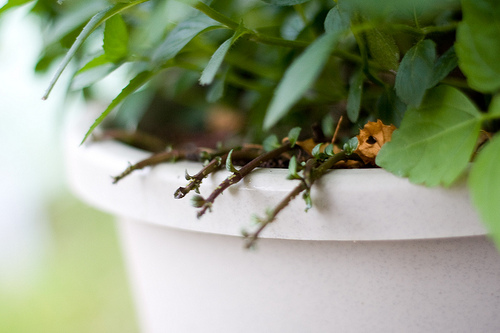(photo via sarae)
Mint is awesomely invasive. If you plant mint in a flower bed, it will send out tons of runners, and suddenly, you’ll have mint in places you never intended or expected. It’s like a friend who asks if they can bring another friend to your party, then rolls in with ten.
Even if you had a big garden in the country, most gardeners would still tell you to wall off your mint in a container. If you have a city garden and container gardening is your only option anyway, mint’s extravagantly impolite nature is actually great news. Awesomely invasive = big growth, which is really satisfying when it’s not choking out your other plants.
So let’s grow some mint! Here’s the lowdown on which varieties are yummiest and prettiest and the other little tidbits you should know before you grow.
The Basics:
Mint likes sun, so a shady corner isn’t the best bet. That said, it doesn’t have to have full sun all day. Morning sun and afternoon shade or vice versa will be just fine. Like most herbs, mint wants moist, well-drained soil, so make sure your pot has holes in the bottom, and water whenever the soil gets dry (I’m watering my mint every day right now, given the heat, but when it cools a little, I’ll back off to every other day).
As mentioned, mint spreads on its own, no help from you necessary, but should you want to grow a new mint plant in a new corner of your balcony or give a pot of mint to a friend, another cool thing about mint is how easy it is to grow from cuttings. All you do is cut a stem, place it in water, and then wait for it to grow roots, like so:
 (via Jacob_Valleau)
(via Jacob_Valleau)
When the roots are about half an inch long, plant the stem in a new pot, and voila, new mint plant.
All the Many Mints:
Now on to varieties. You may think mint is mint and that’s all there is to it, but in fact, there are something like six hundred varieties. Here are a few of my favorites:
 (images via mountainvalleygrowers.com, finecooking.com, and healthandherbs.ie).
(images via mountainvalleygrowers.com, finecooking.com, and healthandherbs.ie).
- Top left: Pineapple mint (Mentha suaveolens ‘Variegata’). The variegation (that’s the fancy word for two-tone leaves) is so pretty I’d grow pineapple mint just to look at it, but the flavor is sweet and subtle and just a little tropical, which doubly recommends it. A real winner.
- Top right: Chocolate mint (Mentha piperita ‘Chocolate’). The leaves on chocolate mint are tiny. In fact, they’re so tiny they’re kind of adorable. Even better, eating a leaf is like popping an After Eight, plus they make your mouth tingle like Altoids. Fantastic.
- Bottom left: Peppermint (Mentha piperita). With peppermint, you get that classic, Christmas-y flavor, but take a look at the stems in the picture. See how they’re red? It’s such a pretty spot of color in the garden. Side note: all mint plants have square stems, as in, honest to goodness right angles. Nature is awesome.
- Bottom right: Orange mint (Mentha piperita ‘Citrata’). This variety is citrusy, as you’d expect, but also a little peppery, which you might not. Plus, the leaves are rounded and pretty.
If you can’t decide which kind to grow, you could go with my personal solution and just grow all of them. Though if I really, truly had to pick just one, I’d say chocolate mint. Those tiny leaves pack a serious punch!

Hi, can you list more mint varieties. I want to know which survives best in cold climates.
Sure! There are SO MANY kinds. A few more fun options — lavender mint, which has nice floral notes. Curly spearmint — as the name implies, the leaves are curly. Kind of fun. Habek mint has long thin leaves and has a long history of use in middle eastern and greek cooking and is kind of cool and different.
They’re all fairly similar in their cold tolerance — they’ll survive winter if you live in zone five or higher. Otherwise, you can treat mint like an annual and just replant it every spring.
Thanks